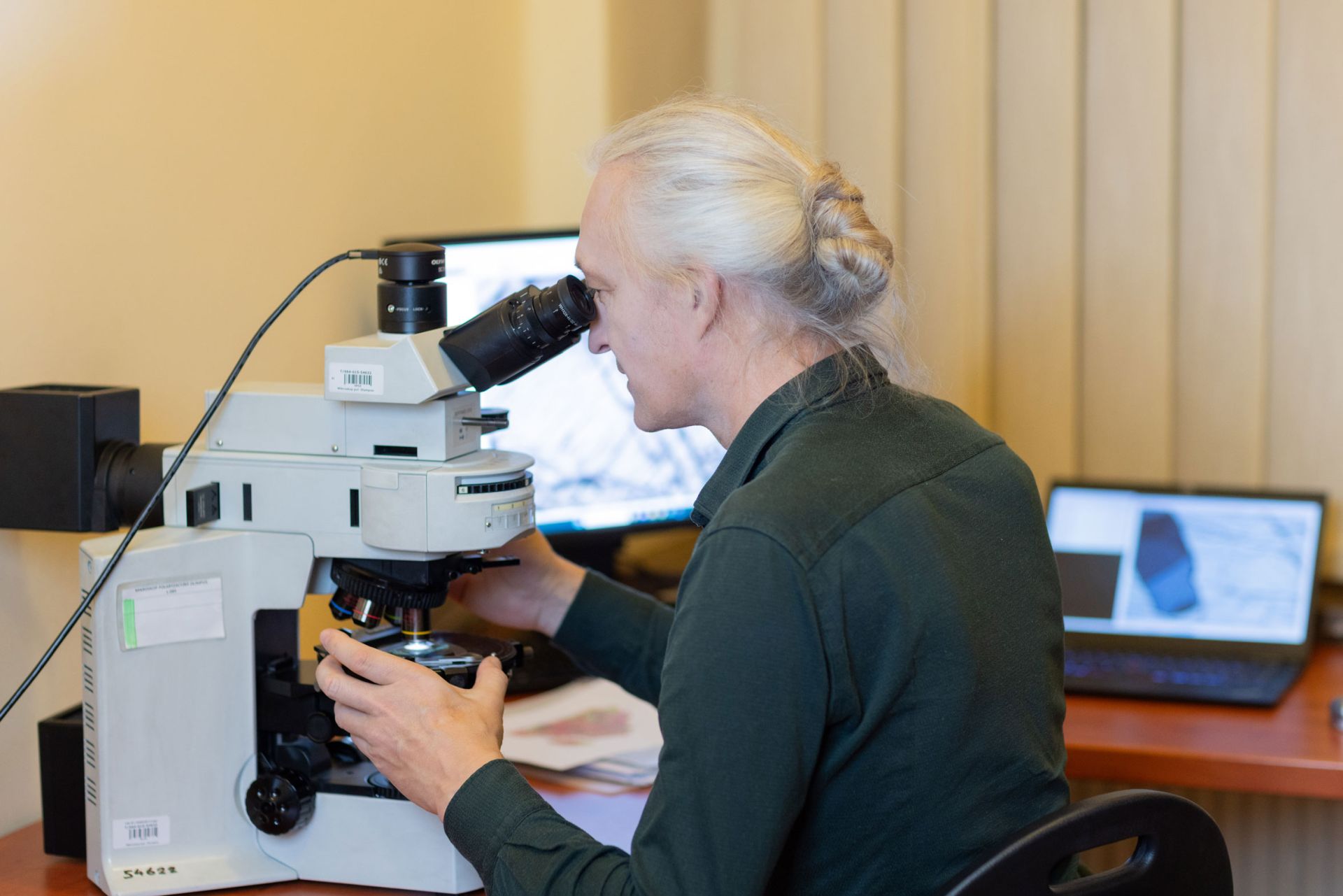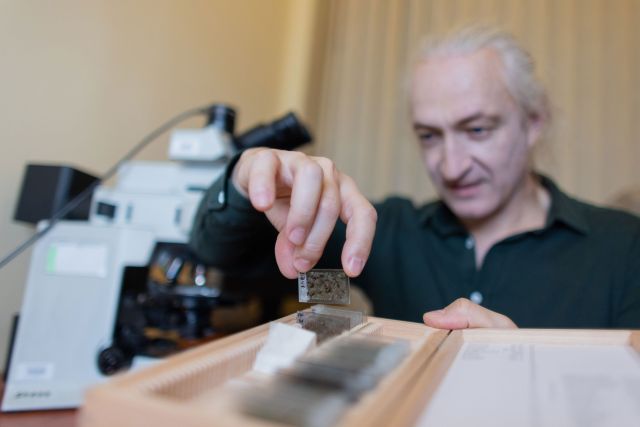Principal Investigator
:
Dr Dirk Spengler
AGH University of Krakow
Panel: ST10
Funding scheme
: POLS
announced on
16 March 2020
Continents are among the oldest structures on our planet's surface and have been moving through plate tectonics for at least 2,500 million years. When they collide, they form a mountain belt under which one continental margin is pushed under the other until buoyancy allows it to return to the surface.
 Dr Dirk Spengler, photo by Michał Łepecki
Dr Dirk Spengler, photo by Michał Łepecki
 Dr Dirk Spengler, photo by Michał Łepecki
The maximum depth from which these temporarily submerged crustal rocks (gneiss) were exhumed increased as our planet matured. For example, such orogens have been found to preserve the mineral coesite (a high-pressure variant of quartz that is stable at depths >90 km) only if it is younger than about 630 million years, while those younger than 530 million years may have diamonds (>120 km). However, the mechanisms that made it possible to exhume continental margins from such great depths are controversial, partly because these rocks are not so easy to recognise. One problem concerns the transformation of the so-called ultra-high-pressure (UHP) metamorphic rocks on their way back to the surface, which usually erases most evidence of UHP metamorphism. A further complication is that evidence of UHP conditions can occur preferentially in a relatively rare rock type (eclogite) surrounded by gneiss, where such evidence may be predominantly absent for unknown reasons.
Dr Dirk Spengler, photo by Michał Łepecki
The maximum depth from which these temporarily submerged crustal rocks (gneiss) were exhumed increased as our planet matured. For example, such orogens have been found to preserve the mineral coesite (a high-pressure variant of quartz that is stable at depths >90 km) only if it is younger than about 630 million years, while those younger than 530 million years may have diamonds (>120 km). However, the mechanisms that made it possible to exhume continental margins from such great depths are controversial, partly because these rocks are not so easy to recognise. One problem concerns the transformation of the so-called ultra-high-pressure (UHP) metamorphic rocks on their way back to the surface, which usually erases most evidence of UHP metamorphism. A further complication is that evidence of UHP conditions can occur preferentially in a relatively rare rock type (eclogite) surrounded by gneiss, where such evidence may be predominantly absent for unknown reasons.
The ongoing project investigates different types of eclogite exposed in the Western Gneiss Region of Norway. The eclogites occur within and between spatially separated areas previously recognised to contain UHP metamorphic rocks. Our study showed that similar eclogite types share similar oriented mineral inclusions in clinopyroxene. The oriented mineral inclusion microstructure is typical of UHP rocks and occurs regardless of the spatial occurrence of the samples, i.e. within and between previously recognised UHP areas. The mineral chemistry of coarse-grained, low-alteration eclogite was found to provide direct evidence of metamorphic conditions deep in the diamond stability field, independent also of the spatial occurrence of the samples. As a result, the area of crustal rocks exposed to UHP conditions in western Norway is much larger than previously thought. Consequently, the previously recognised pattern of distinct UHP areas is unlikely to constrain the mechanism of exhumation of these rocks. We are currently analysing the water content of nominally anhydrous minerals in the eclogites. Evaluation of these data is expected to provide answers to the role of fluids in the environment, which on the one hand transported the eclogites upwards and on the other hand caused some of them to no longer remember their history in the diamond stability field.

Project title: UHP obliterated? The evolution of eclogite in and in between UHP areas, in Norway
Dr Dirk Spengler
Dr Dirk Spengler conducts interdisciplinary research on lithospheric mantle rocks that occur enclosed in gneiss and have a dual history, an ancient one in the Earth's mantle and a later tectonic one. He started with doctoral studies on mineral inclusion microstructures, petrology, geochemistry and isotope geochemistry at universities in Utrecht (NL), Amsterdam (NL), Durham (UK) and at the Lamont-Doherty Earth Observatory (USA) and continued with a JSPS fellowship at Kyoto University (Japan). Various professorships and research positions in Japan, Germany and now at the AGH University of Krakow led to his current focus on eclogite, which is closely associated with the mantle rocks.


